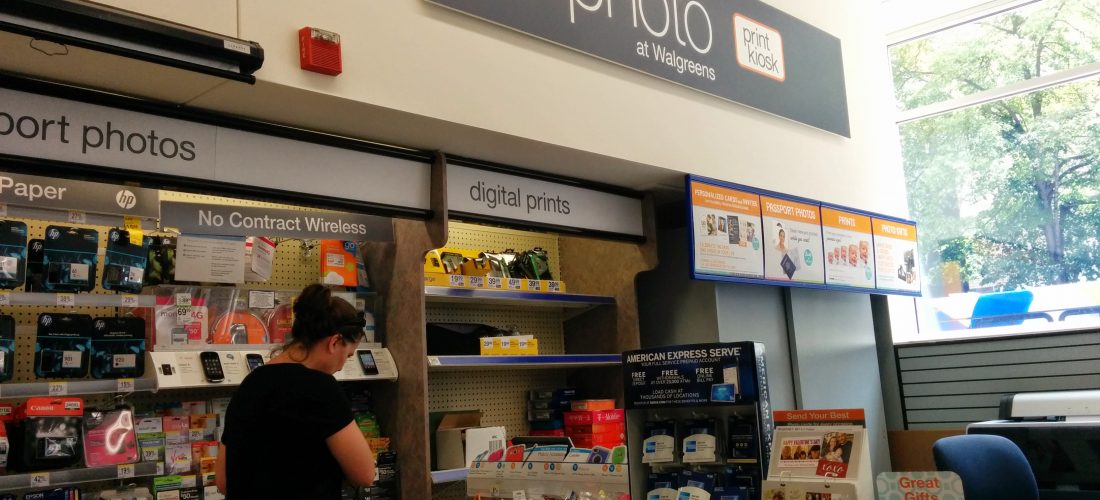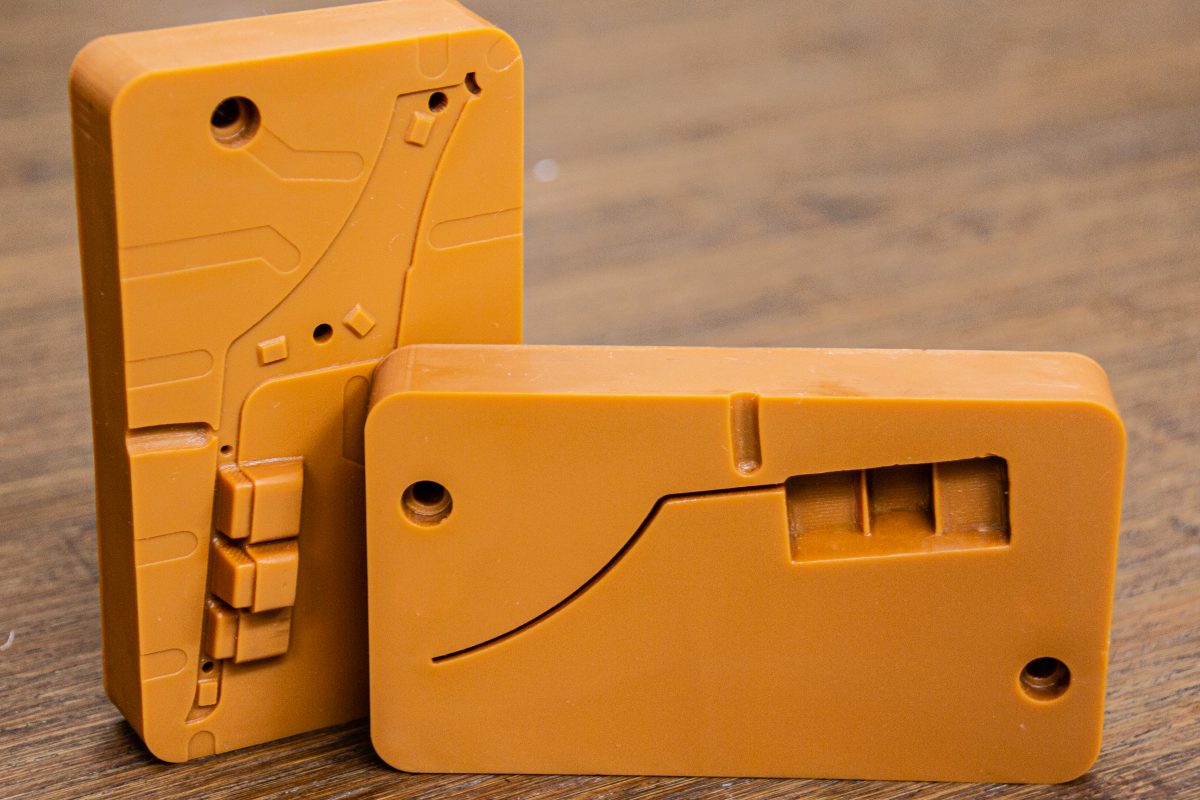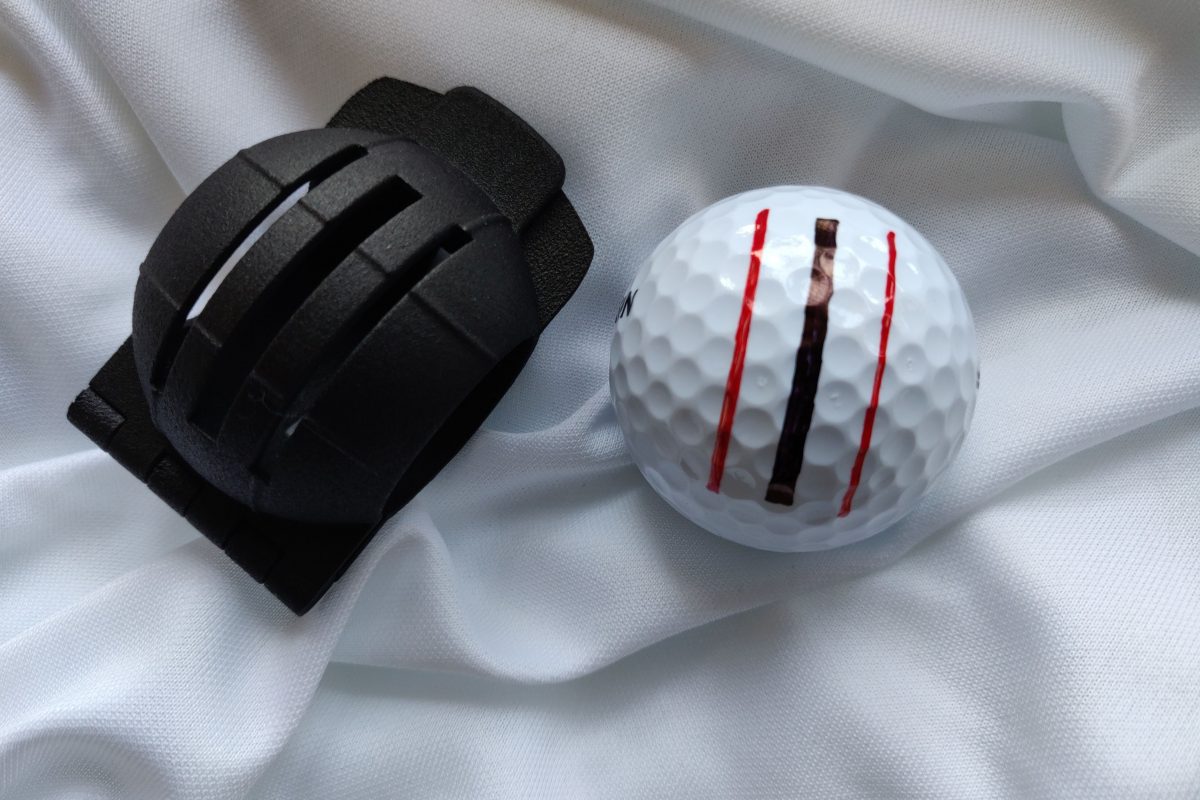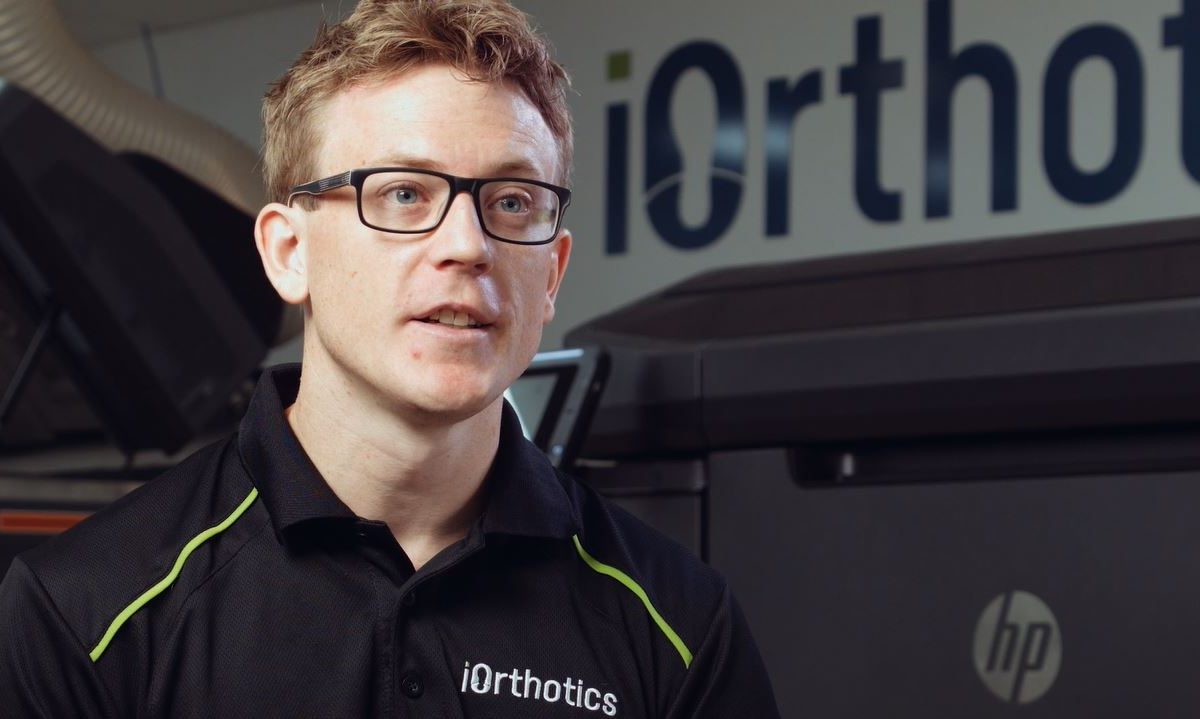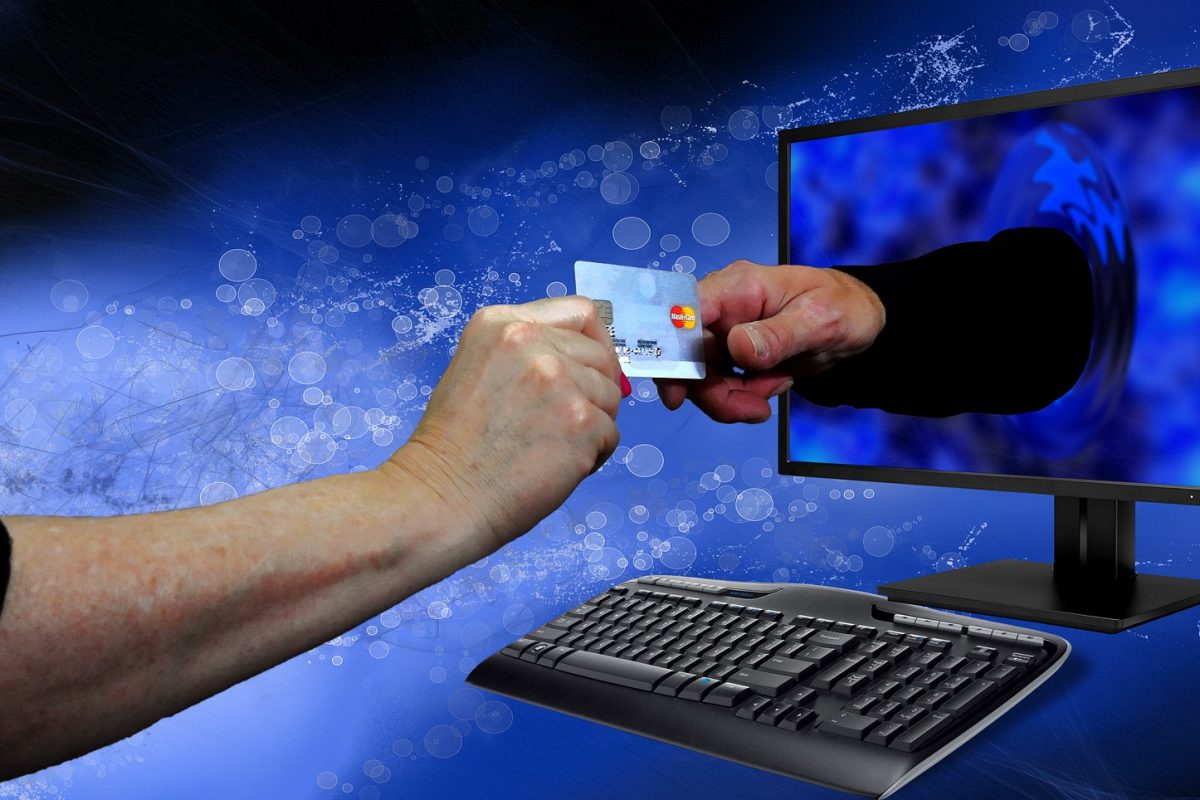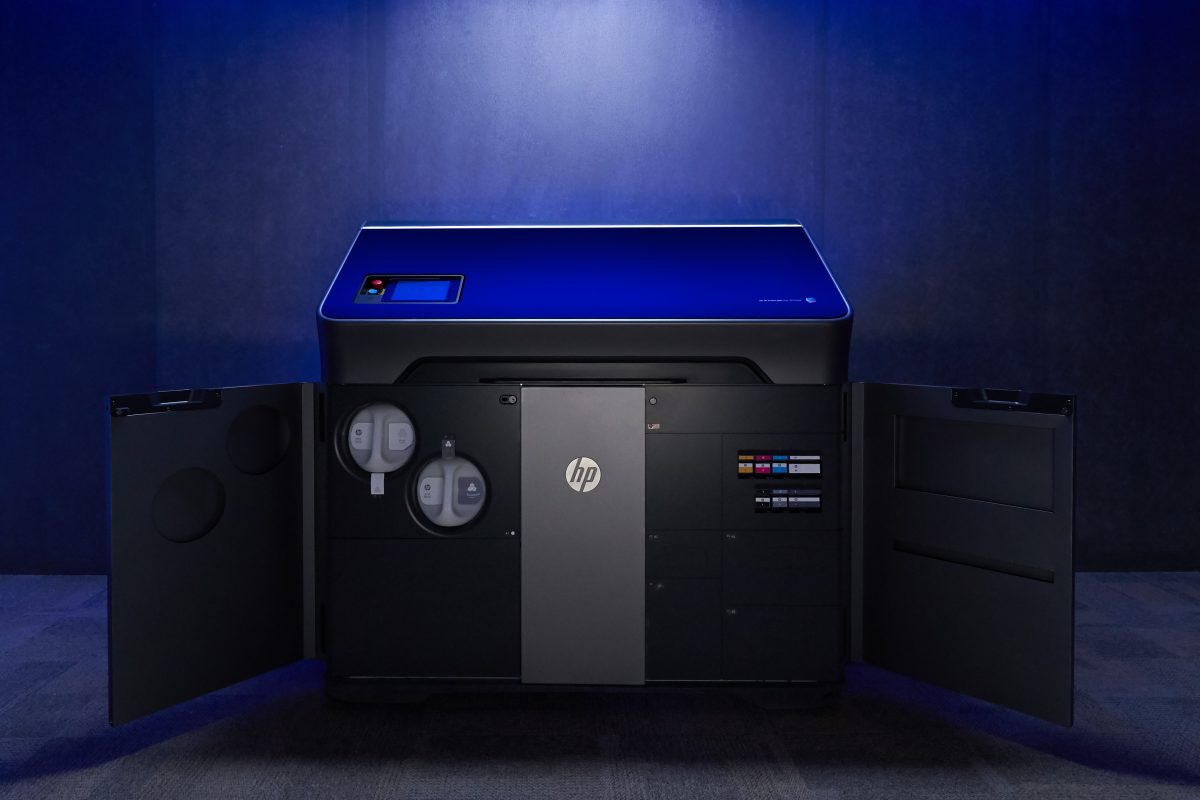The other day I was discussing 3D printing with a friend. The news about Tesco had just come out, and I was telling her that the biggest grocery chain in Great Britain had just gone on record, saying it would offer 3D printing service in-store. She asked why a grocery store would offer 3D printing. I asked if she wondered if people said that when grocery stores installed photo labs. Then it hit me. I’ve spent a lot of time comparing 2D and 3D printing, but maybe the better comparison is photo printing.
I’ve compared 3D printing to photo printing before, but our conversation had me thinking about it all over again. Almost every grocery store and pharmacy has a photo center. They’re digital, and they’re highly automated. Software allows people to upload files from a variety of sources, store them, and print them either with full service by an operator, or self-service at a kiosk.
Could their experience with photo printing put grocery stores and pharmacies in the best position to offer 3D imaging and printing services in-store? Walmart’s UK subsidiary, Asda recently became the first UK supermarket to test a 3D scanning and printing service. They’re scanning people in-store and selling 3D printed figurines which are produced off site and direct shipped to them upon completion. The figurines are mini me’s, the selfies of 3D printing.
Full service isn’t the only option. Consider the DreamVendor. Its a 3D printing kiosk and a model for how self-serve 3d printing could develop at retail. “Think of it as a vending machine with an infinite inventory”, says the team at Virginia Tech. You simply insert an SD card that contains 3D printer code (generated from your CAD model) into the machine; the DreamVendor then prints your 3D part and dispenses it into a bin when it’s finished.”
Tesco, a British multinational grocery and general merchandiser, is the second-largest retailer in the world. They recently announced plans to offer 3D printing in-store. In a recent V3 interview, Tesco IT chief Mike MacNamara said he thinks, “it will help Tesco as a company, I don’t think it will be a bad thing,” he said. “It’ll be a great thing for customers, we’ll have 3D printing in our stores.”
3D imaging and printing have been forecasted $15 billion plus businesses by 2020. Right now approximately 70% of 3D printed things are used as prototypes. By 2020, 80% (of a $15 billion market) will be consumed as final product. Where better to produce those products than a place the consumer frequently shops? Tesco’s MacNamara said “over the next few years you will see 3D printing in shops, because for the missing hose from the vacuum printer, you can print them in the time that someone enters the store, does a bit of shopping and leaves the store. So I can definitely see that being part of the retail offering in the none too distant future.”
We’re on the same page. I had written a week earlier that home improvement retailers should offer the service, even mentioning accessories for vacuums. Why couldn’t grocery stores and pharmacies compete for those sales? You have to make a special trip to the hardware store but you’re always going to the grocery store. Picking up dinner, why not 3D print a new toothbrush while you’re there. Need a prescription? While you’re there, print some household goods. You can even watch them being made. Not sure any of these “could put Target out of business,” but they will sell and people will watch in amazement as their products are made.
Really? There’s no way 3D printing will drive that much engagement, right? Last night I was at Dewey’s Pizza here in Cincinnati. They have a big window where you can see into the kitchen. They have a bunch of chairs underneath so kids can see in. There was a line to watch. Imagine what will happen their pizzas (or nearly anything else) are 3D printed.
The recent 2012 Grocery Shopper Trends report captured four trends that are significant for the grocery industry and likely to impact and shape the retailer / consumer relationship:
- The Economy’s Effect on Long Term Consumer Behavior: the Shift to Value-seeking
- Technology Enhanced Shopping: the Future is Here
- The Growing Impact of E-Commerce
- Format Innovation: Small Formats Take Hold
3D printing is a means to an end in capitalizing on all four. 3D printing is all about value. Because it’s digital, it allows consumers to quickly acquire what they need, when they need it. Nearly all the ancillary costs of getting the product to market are stripped away. The technology makes it easy to get more products to the retail market, driving the innovation and use of 3D printed products. It also requires less space, and little merchandising, making it ideal for smaller format stores.
But where 3D printing could really benefit a grocery store or pharmacy is online.
Online grocery sales currently account for 1% of the $631 billion U.S. grocery business. Retailers are working on their revenue models for online grocery shopping, and online grocery and home delivery services are rapidly expanding into markets across the country. Kroger Company, here in Cincinnati, recently announced its intention to purchase Harris Teeter, in part to help with online shopping and delivery. Harris Teeter’s Express Lane program is an early leader in the space and has been evangelizing the benefits to its customers for some time.
How could 3D printing help them own online shopping and home delivery?
3D printing is a hot topic. The PR, buzz, and viral share drives new traffic. Initially consumers could order 3D printed objects directly from the store’s website and the printing could happen anywhere. Eventually, once the store network was in place, products could be scheduled for production in-store. In the mean time, the retailer, via its eCommerce site would gain significant intelligence about potential delivery customers – including their location and profile.
Further, an eCommerce portal would likely be the place to upload files. Taking a cue from the photography industry, retailers could allow for file upload from multiple sources (desktop, mobile, local, etc.) into their online platform. Like the photo industry it creates an opportunity to screen files for content and printability. It would also provide an opportunity to partner with the file owner, adding it to the store’s product catalog where it could be sold digitally, or in product form, online or in-store.
Think about the opportunities that could create for mobile. Retailers could advertise the service in-store. Customers seeing the ads would search for content from their mobile devices. Retailers (and the consumer brands that supply them) could certainly monetize that traffic. Beyond loyalty cards and coupons, retailers could promote specific 3D printable products that the consumer could have made while they wait (driving even more time in-store.)
Consumers would purchase on the web while they’re standing on the floor. Just like you’d reserve a RedBox movie or order movie tickets while standing in line. Its reverse showrooming. View online and order in-store.
What Types of Products?
There are 3D printable products in nearly every aisle. Ignoring food for a moment (we already know pizza is going 3D) consider some of the others. How about cookie cutters for bakery and housewares? Vaises for the floral department? Jewelry? Think for a moment how Kroger could leverage the Fred Meyer brand in that scenario! But there’s more. From 3D printed toothbrushes to casts and braces, there’s big opportunity in home healthcare. And it doesn’t end there. From baby to pet, appliances to party supplies, school and office, 3D printed product opportunities abound.
Where Would Content Come From?
Like the photo industry, some of the content will come direct from users. This could be captured serendipitously as users upload files, or be crowdsourced as part of a directed effort. At 3DLT we run monthly “theme drives” with our designers to boost volume in certain, specific categories. This month we’re emphasizing outdoor products.
Additionally, content could be supplied by creators and licensors. These could include original equipment manufacturers (OEM) and consumer packaged goods (CPG) companies who already sell physical products in store. Digital sales of their products could create an entirely new revenue model for them. An online catalog makes it easy to receive, inspect, activate and promote their content. An eCommerce sales model makes it easy to onboard new sellers and automate reporting and payment.
Finally content will come from scanning. In their test, Asda is scanning people in-store to create the 3D selfies. While an interesting use case, its more likely stores will be scanning inanimate objects. There are lots of physical products in our world that don’t have a digital equivalent.
As I mentioned in a previous post on the automotive aftermarket, “There would certainly be challenges, including quality, usability, and intellectual property concerns, among others, so business rules would need to be created around what could be scanned.” That would be true for any retailer, but consider the opportunity a scanning offers. First, it is a source of immediate revenue – it would be sold as a service, and much of what is scanned would be printed by the requestor. Secondarily, depending on the factors mentioned above, the scan could be resold to other interested customers. The opportunities for the collectibles market alone are mind boggling.
Who Should Offer the System?
Many large format stores have spent years optimizing their space, going from supermarkets to superstores and back. Also popular is the box within a box concept of subleasing space inside the store. Some services are owned and operated by the retailer. Others are independent. Walk into a grocery store and you’re likely to see a bank, a health clinic and yes, even occasionally a photo lab. Most of those have gone from full service operations to self service kiosks.
Could there be an opportunity for a third party like Kodak to supply 3D printing service in stores where they’ve already got a presence, selling photo printing? While the company has fallen on hard times, it does have a rich history in imaging. Could they leverage it? Could they see the forest before the trees? They got behind on digital photography because they were concerned it would eat into film sales. Will they miss the boat with 3D printing too, seeing it as a distraction from photo printing? Would competitors like Fujifilm and Noritsu be as myopic?
Or will the stores themselves want to own the business? In 2012, photo printing was a $2.8 billion business. As mentioned above, 3D imaging and printing are forecast to clear $15 billion a year within the next seven years. Say by then, the addressable market for a Kroger or Safeway is $5 billion. That’s a lot of revenue to sublease.
Perhaps an even bigger motivator is the customer relationship. As one executive in the 2012 Grocery Trends survey noted, “We have to rethink merchandising from items to ideas. Historically we sold our shoppers merchandise to fill their pantries. They are now asking us for help in understanding how to live better lives.” Just as digital technology has made other products more accessible, 3D printing allows customers to determine what is manufactured and where. It has the potential to provide products that are cheaper, greener and of better quality than mass manufactured items. Anyone interested in participating in that conversation needs to lay the groundwork now.
Years ago there was no way a grocery or pharmacy chain could undertake such an endeavor. They needed a partner like Kodak. But after years of playing catch-up, these retailers now have software platforms that could support digital manufacturing. He who owns the software owns the customer.
They also have the brick-and-mortar to support real world sales. Many in the media are still enamoured with the idea of a 3D printer in every home. People thought the same way about photo printing – soon there would be no need for the service. People would just manufacture their own. What we found out was that consumers found it easier to send their prints to a service. By 2010 more photos were printed online than at home. Today the spread is even more significant. Fewer photos are printed at home, more are ordered online, and many of those are picked up in-store.



